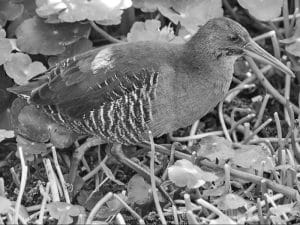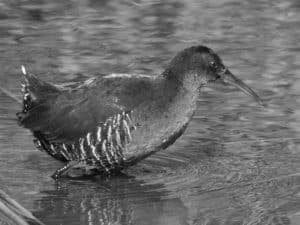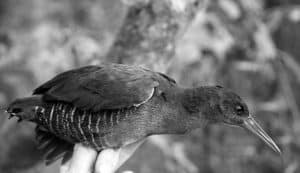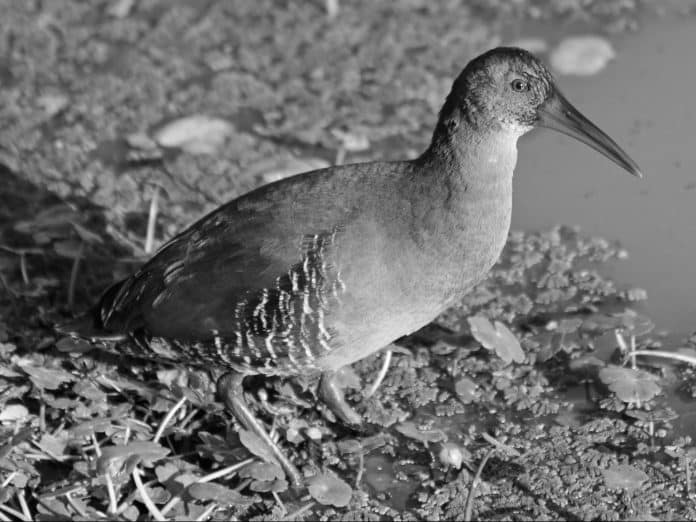Introduction to African Rail in Tanzania
The African Rail is a fascinating bird species that can be found in the beautiful wetlands of Tanzania. This elusive bird is known for its distinctive call and secretive nature, making it a rare and exciting sighting for birdwatchers and nature enthusiasts. In this article, we will delve into the habitat, behavior, and conservation efforts for the African Rail in Tanzania, as well as provide tips for spotting and observing this magnificent bird.
The Habitat and Distribution of African Rail

The African Rail is primarily found in the wetlands of Tanzania, particularly in the eastern and southern regions of the country. These wetlands provide the perfect habitat for the bird, with their dense vegetation, shallow water, and abundant food sources. The African Rail prefers areas with thick reeds and grasses, where it can hide and forage for insects, small fish, and amphibians.
While the African Rail is mainly found in Tanzania, it can also be spotted in other countries across sub-Saharan Africa. However, Tanzania is particularly renowned for its wetland ecosystems, which attract a diverse range of bird species, including the African Rail.
Behavior and Characteristics of African Rail
The African Rail is a small bird, measuring about 25 centimeters in length. It has a long, slender body, with a short tail and powerful legs. The bird is primarily brown in color, with a distinctive black and white pattern on its wings and a red beak. Its plumage provides excellent camouflage in the dense vegetation of the wetlands, making it difficult to spot.
Despite its secretive nature, the African Rail can be identified by its unique call, which is a series of loud, repetitive notes that sound like “kek-kek-kek.” This call is often heard during the breeding season when the males are trying to attract females. The African Rail is a monogamous bird, forming pair bonds that can last for several breeding seasons.
Best Places to Spot African Rail in Tanzania
If you’re hoping to catch a glimpse of the African Rail in Tanzania, there are several prime locations that offer excellent opportunities for sightings. One of the best places to spot this elusive bird is the Selous Game Reserve, located in the southeastern part of the country. This vast reserve is home to a variety of wildlife, including the African Rail, which can be seen along the banks of the Rufiji River.
Another great spot for observing the African Rail is the Kilombero Valley, situated in the eastern part of Tanzania. This wetland area is known for its rich biodiversity, and birdwatchers can often spot the African Rail hiding among the reeds and grasses. The nearby Udzungwa Mountains National Park is also worth a visit, as it offers a chance to see not only the African Rail but also other endemic bird species.
Tips for Observing African Rail in the Wetlands

Spotting the African Rail can be a challenge due to its secretive nature and excellent camouflage. However, with some patience and the right techniques, you can increase your chances of observing this fascinating bird in the wetlands of Tanzania. Here are a few tips to keep in mind:
- Listen for the Call: The African Rail’s distinctive call is one of the best ways to locate the bird. Take the time to familiarize yourself with its unique sound before your trip, so you can easily recognize it when you hear it in the wetlands.
- Be Quiet and Still: The African Rail is easily startled, so it’s important to be as quiet and still as possible when searching for it. Avoid sudden movements and minimize noise to avoid scaring the bird away.
- Use Binoculars or a Telephoto Lens: The African Rail is often found in areas with dense vegetation, making it difficult to see with the naked eye. Invest in a good pair of binoculars or a telephoto lens to get a closer look at the bird without disturbing its natural behavior.
By following these tips and being patient, you’ll have a better chance of spotting the African Rail in its natural habitat and enjoying a truly memorable experience.
Conservation Efforts for African Rail in Tanzania
The African Rail, like many other bird species, faces various threats to its survival. Habitat loss, pollution, and climate change are some of the major challenges that the African Rail encounters in Tanzania. As wetlands are drained for agriculture and industrial development, the bird’s habitat shrinks, leading to a decline in its population.
To mitigate these threats, Tanzania has implemented several conservation efforts to protect the African Rail and its wetland habitat. The government has established protected areas and national parks that prioritize the conservation of wetland ecosystems and the species that rely on them. Additionally, local communities and international organizations are working together to raise awareness about the importance of wetland conservation and sustainable land use practices.
Other Bird Species to Look Out for in the Wetlands
While the African Rail is undoubtedly a highlight for birdwatchers visiting the wetlands of Tanzania, there are many other bird species that you can expect to encounter during your exploration. The wetlands are home to a diverse array of avian life, including several endemic and migratory species.
Some notable birds to keep an eye out for include the African Fish Eagle, Grey Crowned Crane, Malachite Kingfisher, and the Hamerkop. These birds, along with many others, contribute to the rich biodiversity of Tanzania’s wetlands and offer fantastic opportunities for photography and observation.
Photography Opportunities with African Rail
For photographers, the African Rail presents a unique and exciting subject to capture in the wild. The challenge of photographing this elusive bird adds to the thrill of the experience, and with the right equipment and techniques, you can capture stunning images that showcase the beauty of this species.
When photographing the African Rail, it’s important to respect the bird’s natural behavior and habitat. Use a telephoto lens to maintain a safe distance and avoid disturbing the bird. Patience and persistence are key, as capturing the perfect shot may require spending hours waiting for the bird to emerge from its hiding place. Remember to also take advantage of the stunning wetland landscapes and other bird species that may be present, creating a well-rounded collection of images.
Cultural Significance of African Rail in Tanzania

The African Rail holds cultural significance for the people of Tanzania, particularly for indigenous communities living in or near wetland areas. The bird is often associated with good luck and is considered a symbol of fertility and abundance. Its unique call is believed to bring rain, making it an important bird in traditional rituals and ceremonies.
In addition to its cultural significance, the African Rail also plays an ecological role in wetland ecosystems. As an indicator species, its presence or absence can indicate the health of the wetland habitat. By protecting the African Rail and its habitat, Tanzania is not only preserving its cultural heritage but also ensuring the conservation of a vital ecosystem.
Conclusion: Exploring the Wonders of African Rail in Tanzania
The African Rail is a rare and captivating bird that can be found in the heart of Tanzania’s wetlands. Its secretive nature and distinctive call make it a thrilling sight for birdwatchers and nature enthusiasts. By understanding its habitat, behavior, and conservation status, we can appreciate the importance of protecting this incredible species and the wetlands it calls home.
As you embark on your journey to spot the African Rail, remember to be patient, listen for its call, and respect its natural habitat. The wetlands of Tanzania offer not only a chance to observe this remarkable bird but also an opportunity to connect with the rich biodiversity and cultural heritage of the region. So grab your binoculars, pack your camera, and get ready to explore the wonders of the African Rail in Tanzania’s wetlands.

































